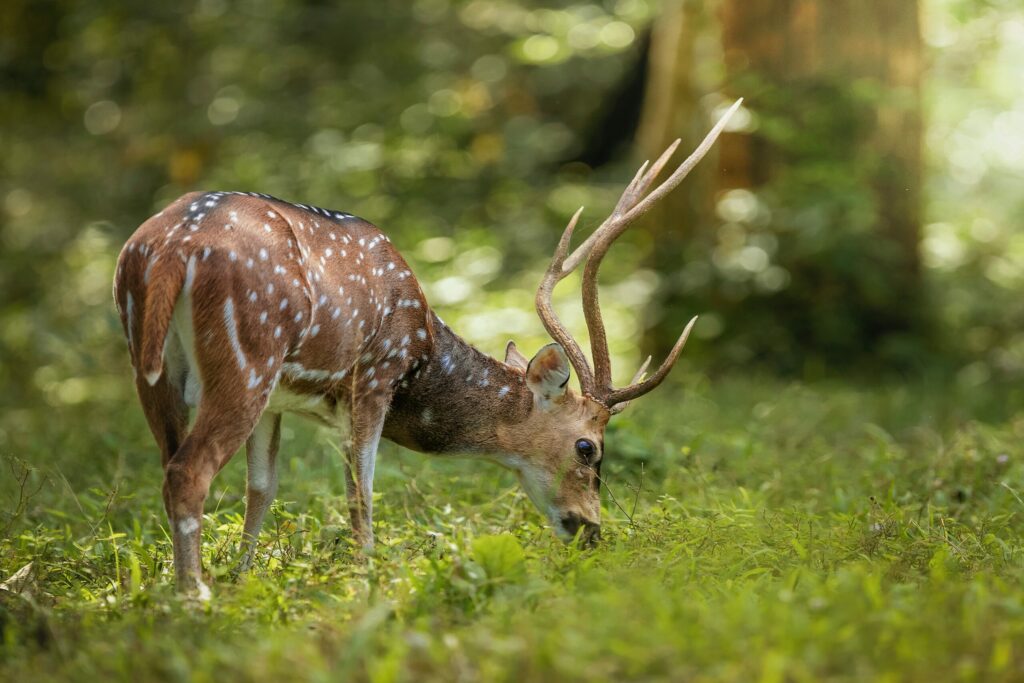
Blog
- SEO Team
Using Deer Attractants & Feeders Effectively

Deer hunting requires a combination of skill, patience, and strategy. One proven method to increase your chances of a successful hunt is the strategic use of deer attractants alongside deer feeders. When used correctly, attractants can lure deer into specific areas, providing hunters with better opportunities. This article explores various types of deer attractants and offers tips on how to effectively use them with deer feeders.
Understanding Deer Attractants
Deer attractants are substances designed to lure deer by appealing to their senses of smell and taste. They come in various forms, including liquids, powders, blocks, and pellets, each serving different purposes based on hunting conditions and goals.
· Food-Based Attractants: These mimic natural food sources and are often infused with sweet flavors like apple, acorn, or molasses. They are effective in drawing deer from long distances and keeping them in the area for extended periods.
· Scent Attractants: These include doe urine, tarsal gland scents, and estrus scents used primarily during the rut to attract bucks searching for mates. They can be dispersed around feeding areas to simulate high deer activity.
· Mineral Attractants: Rich in essential minerals like calcium and phosphorus, these attractants support antler growth and overall health, making them particularly appealing to bucks during antler development seasons.
Integrating Attractants with Deer Feeders
Combining deer attractants with feeders enhances the effectiveness of both by providing a consistent and enticing food source while stimulating the deer’s natural behaviors and curiosities.
1. Choosing the Right Location: Place your deer feeder in a quiet, secluded area near natural deer pathways or bedding areas. Ensure the location provides cover and a sense of security for the deer.
2. Selecting Appropriate Attractants: Match your attractant choice to the season and your hunting objectives. For example, use food-based and mineral attractants during the off-season to establish feeding patterns, and switch to scent attractants during the rut to draw in mature bucks.
3. Proper Application: Apply liquid or powder attractants directly onto the feed or around the feeder to amplify the scent. For block or mineral attractants, position them near the feeder to encourage prolonged visits.
4. Consistency is Key: Regularly replenish your feeders and reapply attractants to maintain interest and establish routine visitation by deer. Consistency helps deer become accustomed to the area, increasing your chances during hunting season.
5. Monitor and Adjust: Use trail cameras to monitor deer activity around your feeder and attractant setup. This data allows you to adjust your strategy by changing attractants or repositioning feeders to optimize results.
Tips for Effective Use
· Mind the Weather: Apply attractants during favorable weather conditions. Rain can dilute scents and wash away attractants, reducing their effectiveness.
· Follow Regulations: Always check local wildlife regulations regarding the use of feeders and attractants, as some areas have restrictions to prevent overfeeding and the spread of disease.
· Avoid Human Scents: When setting up feeders and applying attractants, minimize your scent by wearing gloves and scent-blocking clothing to prevent spooking deer.
· Be Patient: Establishing a successful attractant and feeder setup takes time. Start your preparations well before hunting season to allow deer to discover and become comfortable with the new food source.
Using deer attractants in conjunction with deer feeders is a strategic approach that can significantly improve your hunting success. By understanding the different types of attractants and applying them thoughtfully, you can create an irresistible environment that draws deer consistently. Remember to respect wildlife regulations and ethical hunting practices to ensure a sustainable and rewarding hunting experience.
Recent Articles

We built our first timer over 50 years ago. With that timer, we established a constant determination to build quality products that meet our customers’ needs. This unwavering focus on quality products and excellent customer service is the foundation of Sweeney Enterprises.



